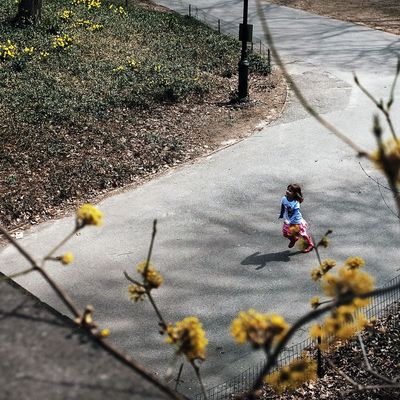
This week, New Yorkers emerged from their darkened studio apartments, blinking and stretching, to greet their first 70-degree day since October. But as the cotton dresses and sandals are resurrected from storage, so too are the eye drops and bottles of Allegra. “Although spring is off to a slow start, now we are starting to see catch up when it comes to a massive pollen surge, the ‘double whammy’ that combines tree and grass pollen, peaking over mid spring and beyond,” said allergist Dr. Clifford Bassett, who noted “this year’s season will be one of the toughest in years.”
Why, exactly? Dr. Bassett points to a number of factors. First off, heavy winter precipitation means the soil and roots of allergenic plants are especially hydrated, priming them to release higher levels of pollen than after a dryer winter. But because temperatures have been so cold recently, plants haven’t begun to bloom yet. Doug Simonian, a lead forecaster with NY Metro Weather, said that colder temperatures have delayed the onset of allergy season, but “as soon as we get into a more rainy and warm pattern everything that’s been kind of holding back could really start to explode around early May or so.”
Dr. Bassett calls this phenomenon the “pollen tsunami”: Once it’s warm enough for plants to bloom, tree-pollen production will also coincide with the onset of grass allergies, meaning sufferers will be forced to cope with two different powerful allergens at once.
In New York, pollution and global warming also play a role: High levels of carbon dixoide gas can trigger trees to produce pollen at three or four times their natural rate. “The pollen itself is ‘super-charged’ from increased greenhouse gases in the environment, resulting in greater allergy misery,” Dr. Bassett said.
There’s also another surprising factor, which Dr. Bassett calls the “battle of the sexes.”
“We have too many male plants in New York,” he said, undoubtedly triggering an onslaught of #banmaleplants tweets. Cities primarily choose to grow male plants because female ones produce seeds that can make clearing sidewalks a real pain. Male plants produce pollen — a less visible menace — but one that can make spring decidedly less enjoyable. With so many male trees around, pollen is released into the air with no female plants to “trap” it, so the allergen just hangs in the air waiting for you to inhale it.
“The worst scenario is to have a really heavy rain storm, and then the next day it’s dry and windy,” said Simonian. “If it’s dry and windy, the pollen that already formed can spread around easily.”
Even though you may have successfully made it through March and most of April without too much sneezing, the worst is yet to come. So buy a Neti pot and go to sleep with a cold compress on your eyes. Try the local organic honey method or install an air purifier. Or just go to your happy place, imagining you’re floating along in the sky high above everything that’s ever made you sneeze. As journalist Ana Marie Cox tweeted, “In heaven there are no allergies.”





























